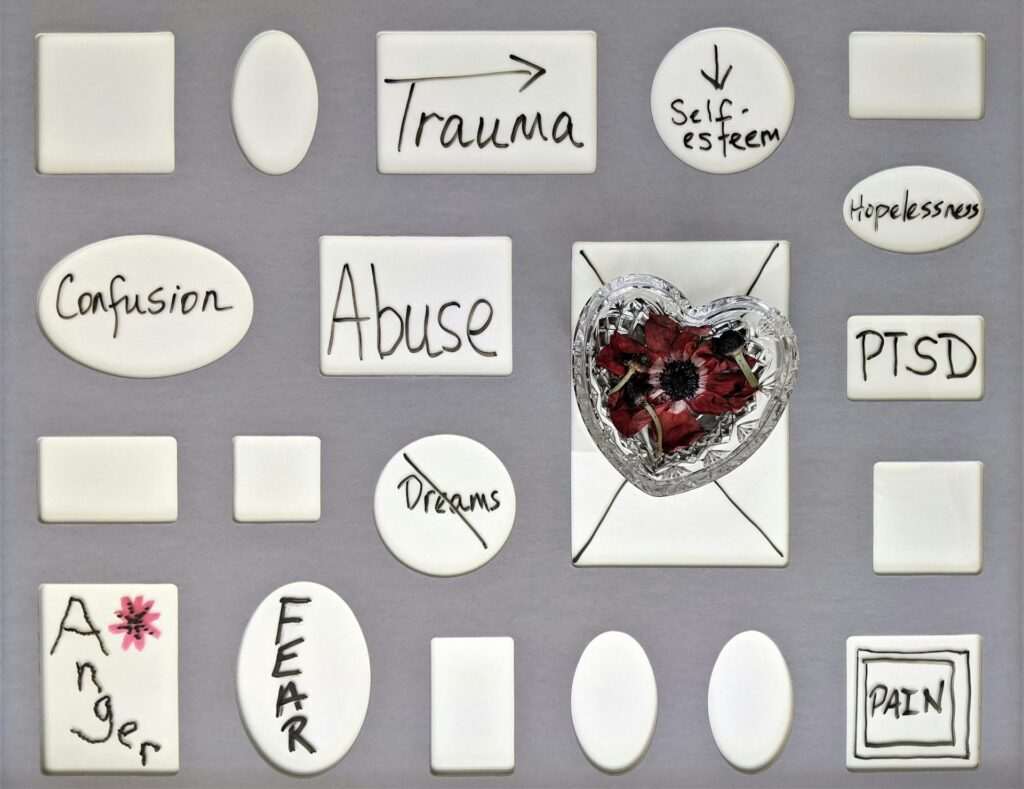
Photo by Susan Wilkinson on Unsplash
Do you sometimes feel like your past is a weight you can’t shake off? Like you’re constantly on edge, waiting for the other shoe to drop? You’re not alone. Trauma has a way of sticking around, but here’s the good news: you can move from trauma to tranquility and find peace in your everyday life.
The Trauma Trap
Let’s get real for a second. Trauma isn’t just about big, dramatic events. It can be subtle, sneaky, and show up in ways you might not expect.
Common Signs of Lingering Trauma
- Constant anxiety or fear
- Difficulty sleeping or nightmares
- Emotional numbness or mood swings
- Avoiding certain places or situations
- Physical symptoms like headaches or stomach issues
Sound familiar? Yeah, trauma’s tricky like that. But recognizing it is the first step to healing.
The Journey from Trauma to Tranquility
Now, I’m not gonna lie to you – this isn’t an overnight fix. It’s a journey. But it’s one worth taking.
Step 1: Acknowledge Your Trauma
This might seem obvious, but you’d be surprised how many people try to brush off their experiences.
Pro tip: Write it down. Get it out of your head and onto paper. It’s like decluttering your mind.
Step 2: Seek Support
You don’t have to do this alone. In fact, you shouldn’t.
Options for support:
- Professional therapy
- Support groups
- Trusted friends or family
- Online communities
I’ll be real with you – I was skeptical about therapy at first. Thought I could tough it out on my own. Boy, was I wrong. Getting help was a game-changer.
Finding Peace in the Everyday
Alright, so you’ve acknowledged your trauma and you’re getting support. Now what? It’s time to bring some peace into your daily life.
Mindfulness: Your New Best Friend
I know, I know. Mindfulness sounds like some hippy-dippy nonsense. But hear me out – it’s a powerful tool for dealing with trauma.
Try this: Set aside 5 minutes each day to just breathe. Focus on your breath going in and out. When your mind wanders (and it will), gently bring it back to your breath.
Grounding Techniques
When you’re feeling triggered or anxious, grounding techniques can help bring you back to the present.
My go-to technique: The 5-4-3-2-1 method. Name 5 things you can see, 4 things you can touch, 3 things you can hear, 2 things you can smell, and 1 thing you can taste.
Create a Safe Space
This can be a physical space in your home or a mental image you can retreat to when things get tough.
Personal example: I’ve got a cozy corner in my living room with soft blankets, calming scents, and photos of happy memories. It’s my go-to spot when I need to reset.

Photo by Jared Rice on Unsplash
Everyday Habits for Tranquility
Small, consistent actions can make a big difference in your journey from trauma to tranquility.
Establish a Routine
Routines provide structure and predictability, which can be comforting when you’re dealing with trauma.
Start small: Begin with a simple morning routine. Maybe it’s making your bed, having a cup of tea, and doing some light stretching.
Practice Self-Compassion
Be kind to yourself. Trauma recovery isn’t linear. You’ll have good days and bad days.
Remember: You wouldn’t be harsh with a friend who’s struggling. Treat yourself with the same kindness.
Move Your Body
Exercise isn’t just good for your physical health – it’s a powerful tool for mental well-being too.
Keep it simple: A 10-minute walk, some gentle yoga, or even dancing in your living room can make a difference.
Dealing with Triggers
Triggers are like landmines in your everyday life. But with the right tools, you can learn to navigate them.
Identify Your Triggers
Knowledge is power. The more aware you are of your triggers, the better you can prepare for them.
Tip: Keep a trigger journal. Note what triggered you, how you felt, and how you responded.
Develop a Trigger Action Plan
Have a plan ready for when you encounter triggers.
Example plan:
- Recognize you’re being triggered
- Take three deep breaths
- Use a grounding technique
- Reach out to a support person if needed
FAQs
Q: How long does it take to heal from trauma?
A: There’s no one-size-fits-all answer. Healing is a process and it’s different for everyone. Be patient with yourself.
Q: Can I really find peace if my trauma was severe?
A: Yes, absolutely. It might take more time and effort, but peace is possible for everyone, regardless of what they’ve been through.
Q: What if I don’t have access to professional help?
A: While professional help is ideal, there are other resources available. Look into support groups, online forums, self-help books, and mindfulness apps.
The Bottom Line
Moving from trauma to tranquility isn’t about erasing your past. It’s about learning to live fully in the present, despite what you’ve been through.
Remember, finding peace in the everyday is a practice. Some days will be easier than others, and that’s okay. The important thing is to keep showing up for yourself.
You’ve already survived 100% of your worst days. You’re stronger than you know. And with these tools and practices, you can create a life of tranquility, one day at a time.
So, are you ready to start your journey from trauma to tranquility? Remember, every step forward, no matter how small, is progress. You’ve got this.








